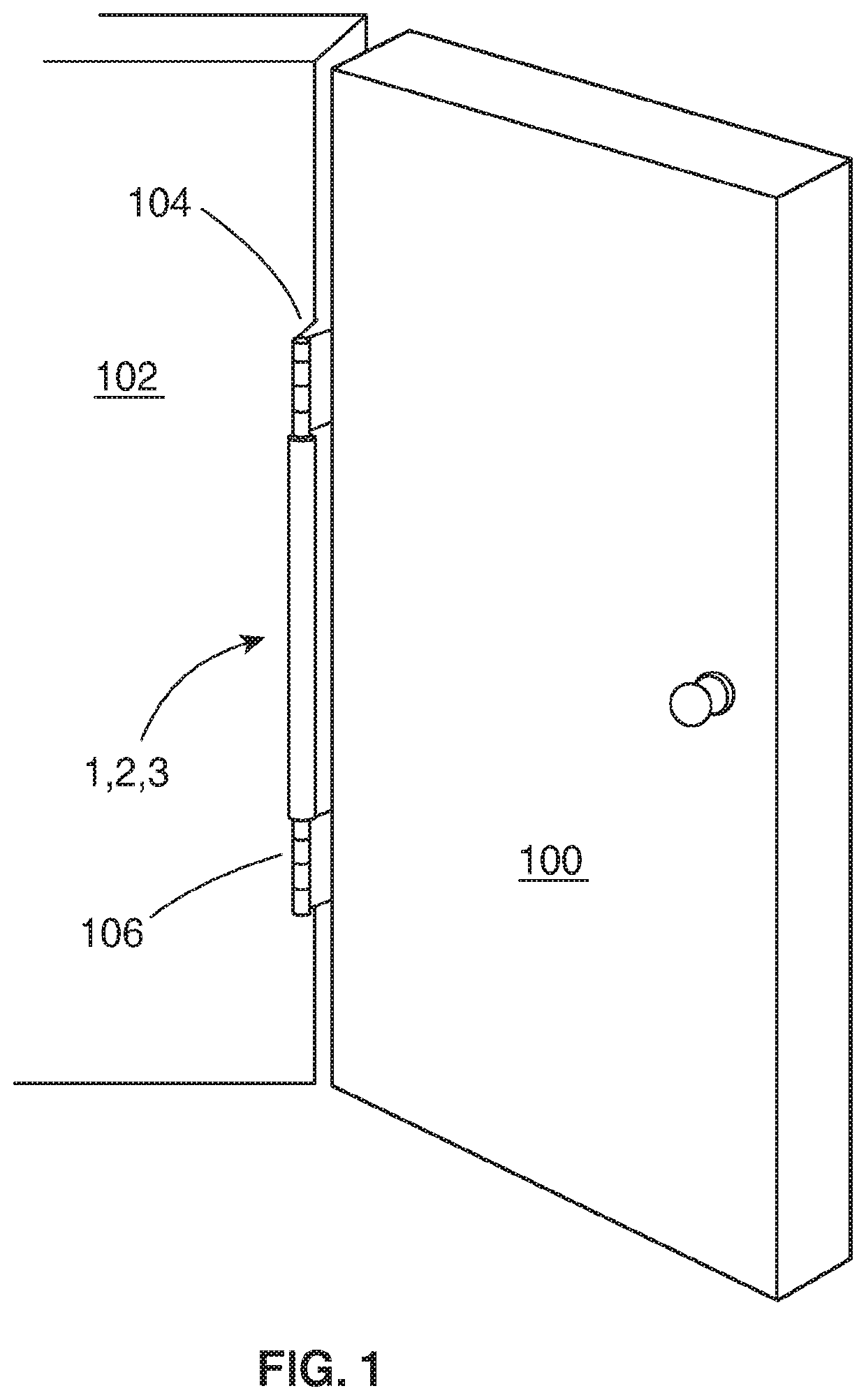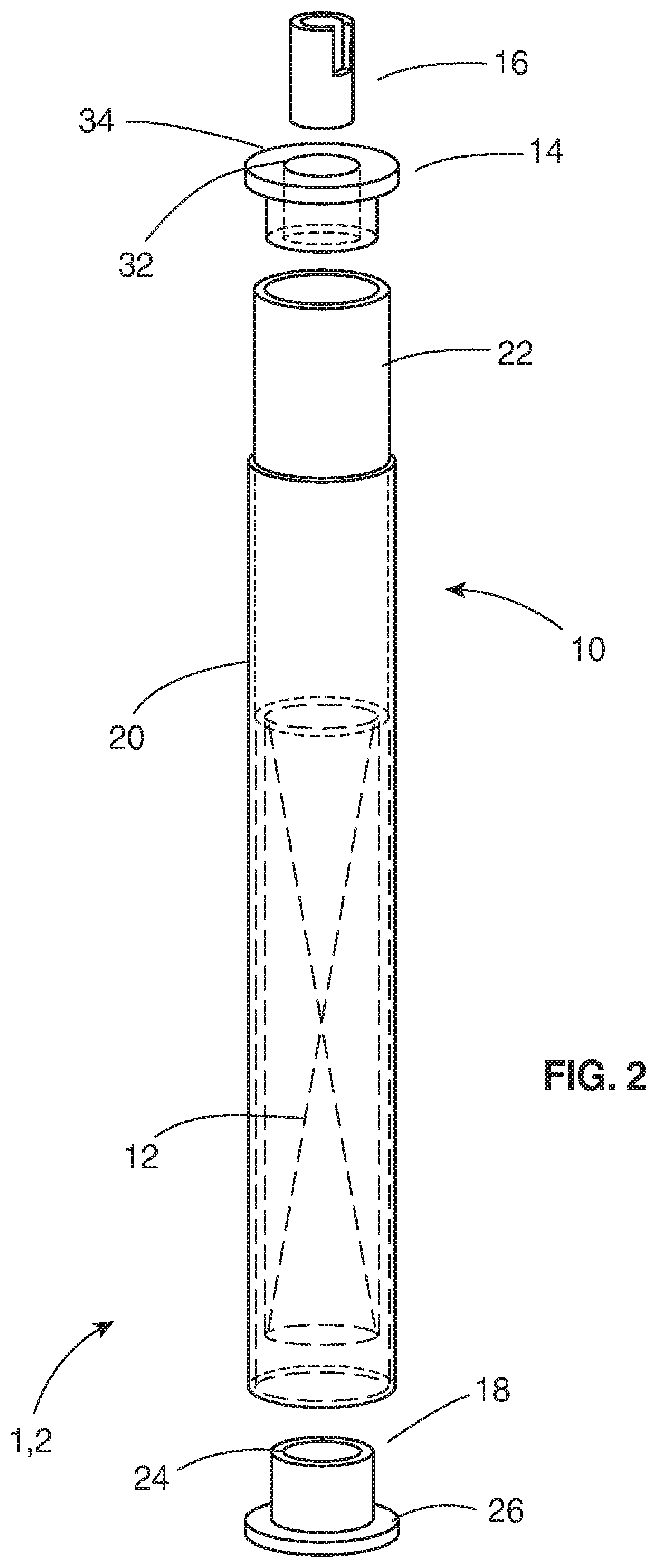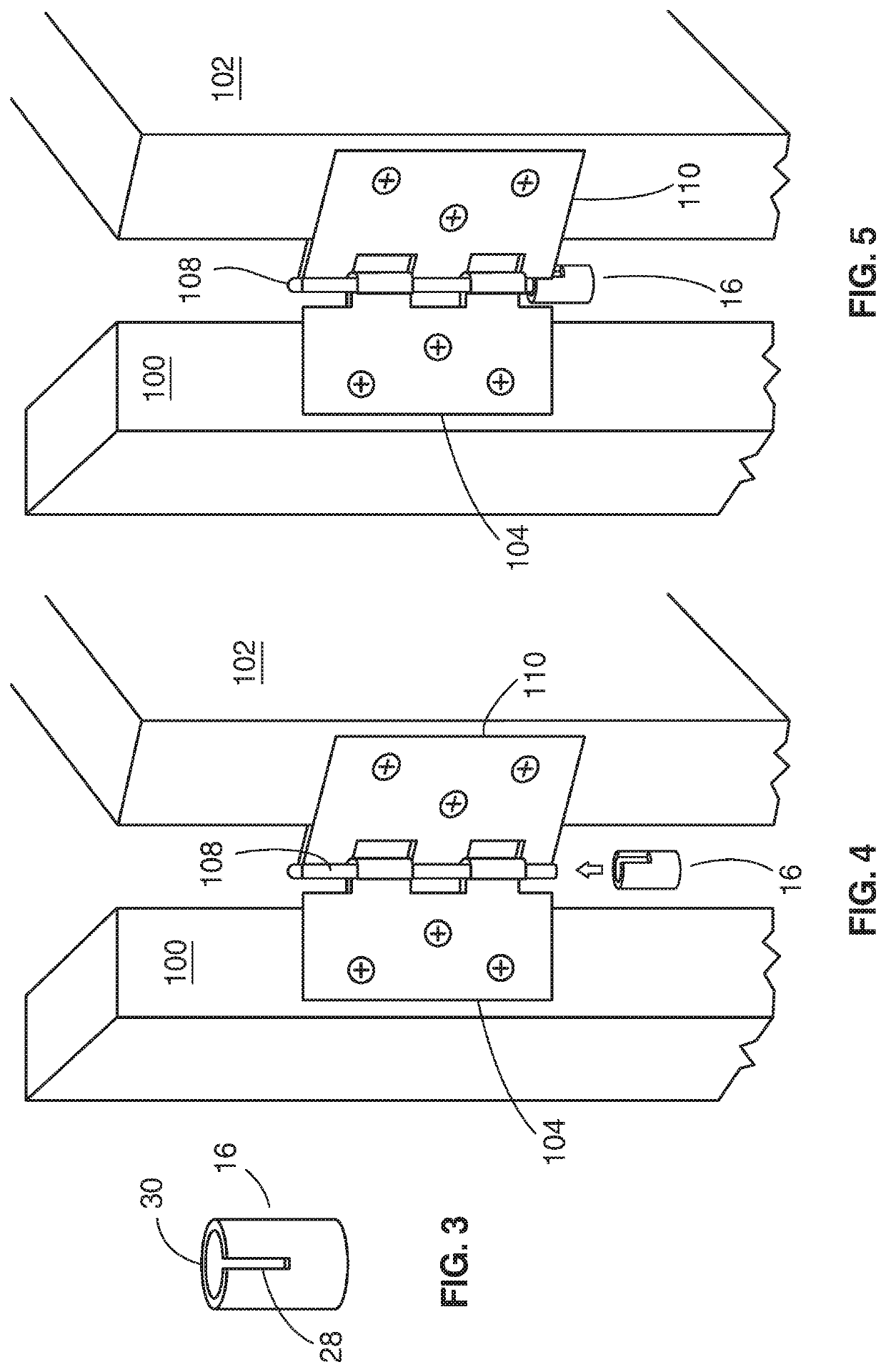Safety guard for door gaps
- Summary
- Abstract
- Description
- Claims
- Application Information
AI Technical Summary
Benefits of technology
Problems solved by technology
Method used
Image
Examples
Embodiment Construction
[0026]With reference now to the drawings, and particularly to FIG. 1, a door safety guard 1, 2, 3 is installed between a top hinge 104 and a bottom hinge 106, which are retained between a door 100 and a wall 102. With reference to FIG. 2, the door safety guard 1 preferably includes a telescoping tube cover 10, a compression spring 12, a top bushing 14, a top hinge tube 16 and a bottom pin bushing 18. The telescoping tube cover 10 includes a first tube 20 and a second tube 22. An inner perimeter of the first tube 20 is sized to receive an outer perimeter of the second tube 22. The bottom pin bushing 18 is preferably retained in a bottom of the first tube 22 with a bonding agent, a press fit, sonic welding or any suitable retention method. However, the bottom pin bushing 18 may also have a slip fit with any inner perimeter of the first tube 20. A head bore 24 formed through the bottom pin bushing 18 is sized to receive a head of a hinge pin in the bottom hinge 106. The bottom pin bush...
PUM
 Login to View More
Login to View More Abstract
Description
Claims
Application Information
 Login to View More
Login to View More - R&D Engineer
- R&D Manager
- IP Professional
- Industry Leading Data Capabilities
- Powerful AI technology
- Patent DNA Extraction
Browse by: Latest US Patents, China's latest patents, Technical Efficacy Thesaurus, Application Domain, Technology Topic, Popular Technical Reports.
© 2024 PatSnap. All rights reserved.Legal|Privacy policy|Modern Slavery Act Transparency Statement|Sitemap|About US| Contact US: help@patsnap.com










